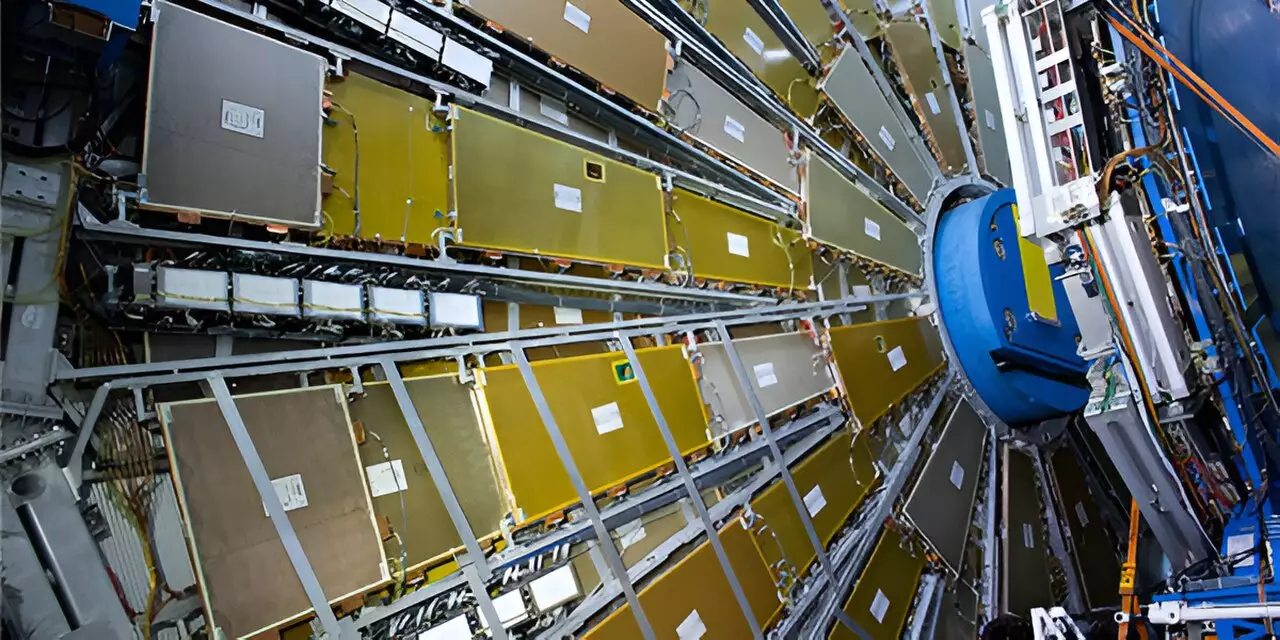Recent advancements in particle physics have led to significant breakthroughs, particularly concerning the interaction behavior of subatomic particles. Two prominent physicists, Andreas Crivellin from the University of Zurich and Bruce Mellado from the University of the Witwatersrand and iThemba LABS in South Africa, have highlighted intriguing inconsistencies in how particles, especially leptons, decay. Their findings reveal deviations from expected outcomes, which could indicate the presence of new bosons, potentially reshaping our understanding of the fundamental forces of nature.
At the heart of the researchers’ studies lies the phenomenon described as multi-lepton anomalies. These anomalies manifest as unexpected production rates of elementary particles like electrons and muons, which surpass the predictions made by the widely accepted Standard Model of particle physics. As Mellado articulately suggests: “The multi-lepton anomalies hint at the existence of a new Higgs-like boson, one that is heavier than the boson discovered in 2012.” This assertion stems from the intricate decay patterns observed at the Large Hadron Collider (LHC), where the interactions of particles give scientists key insights into the underpinnings of matter.
The intrigue surrounding these anomalies lies not only in their statistical significance but also in what they might mean for future discoveries. The potential existence of new bosons could revolutionize our grasp of particle physics and offer explanations for some of the universe’s most perplexing mysteries, such as dark matter or the unification of forces.
The Standard Model has long served as the cornerstone of particle physics, delineating the fundamental forces and particles that constitute our universe. Despite its successes, it has come under scrutiny for its inability to address various phenomena. Questions remain unanswered concerning dark matter, the gravitational force, and why certain particles exhibit characteristic behaviors that deviate from predictive models.
Crivellin and Mellado’s work challenges the Stand Model’s sufficiency. Their article, published in *Nature Reviews Physics*, scrutinizes multi-lepton decay processes at the LHC, revealing discrepancies that could point to new physics beyond the established framework. As Crivellin explains, “An anomaly is a significant deviation from expected behavior; identifying such anomalies bolsters the case for discovering newfound particles that could expand our knowledge.”
The discovery of the Higgs boson in 2012 was a watershed moment in the study of particle physics. It confirmed critical aspects of the Standard Model and unlocked pathways for further exploration into the universe’s fabric. The recognition of Francois Englert and Peter Higgs with the Nobel Prize in Physics in 2013 underscored the importance of this discovery. As Mellado notes, the Higgs boson elucidates how particles acquire mass—an understanding that lays the groundwork for probing other realms of physics.
With the hints of new bosons surfacing, there exists an even greater incentive for scientists to push the boundaries of particle physics. Anomalies, as the researchers propose, often serve as precursors to groundbreaking discoveries, providing tantalizing clues that propel further investigation. As evidenced by the historical context of the Higgs boson’s discovery, anomalies often point toward significant breakthroughs.
The research that illuminated the multi-lepton anomalies originated from collective efforts initiated during the International Workshop on Discovery Physics at the LHC in December 2014. Contributions from various international experts, including the leadership of Professor Alan Cornell and Dr. Mukesh Kumar, emphasize the collaborative nature crucial to advancing scientific knowledge.
The comprehensive examination of particle physics requiring collaboration across borders reflects the discipline’s interconnectedness. As emerging scientists react to findings and explore the implications of anomalies, the landscape of particle physics may undergo transformative changes.
As particle physicists navigate the complexities of the subatomic world, findings like those evidenced by Crivellin and Mellado remind us of the mysteries still embedded within the fabric of matter. The comprehension of particle interactions is not static; rather, it is subject to continuous refinement as new data reveals inconsistencies.
The potential identification of new bosons could serve as a paradigm shift that answers longstanding questions in physics. While the certainty surrounding the current models dissipates, the landscape of inquiry remains rich with possibilities—underscoring the importance of persistence and innovation in the realms of particle physics. As history illustrates, every anomaly observed in nature can be a beacon guiding researchers toward the next key discovery that may unlock the universe’s many mysteries.

